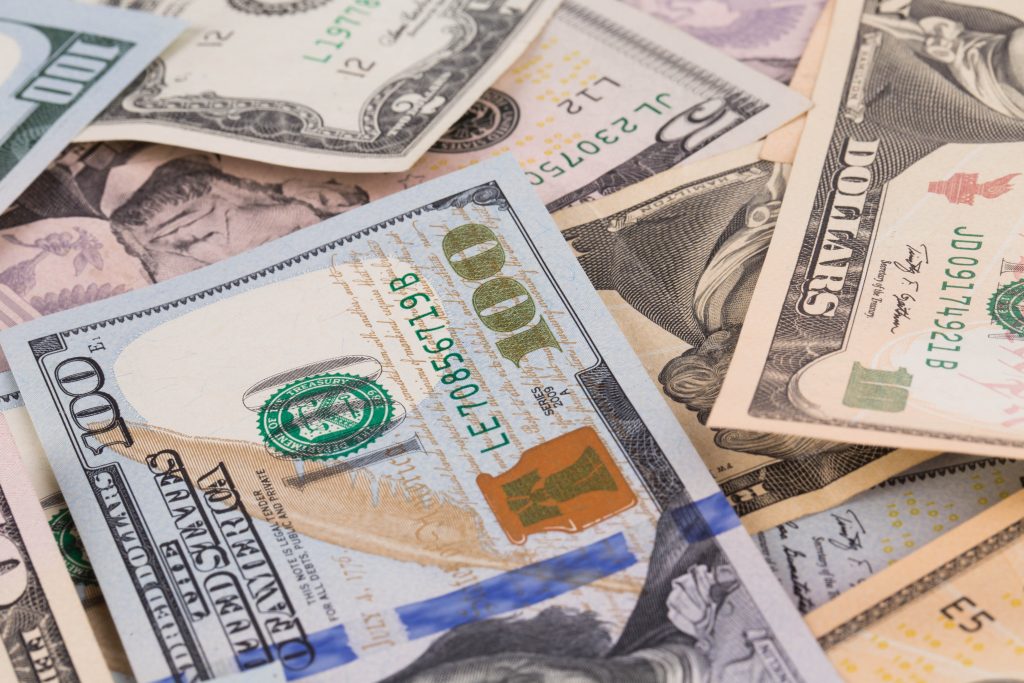When it comes to forex trading, understanding currency pairs and their functions may seem complex. However, success in Forex hinges on understanding the different types of currency pairs, how they can impact your trading strategies, the factors influencing their values, and the opportunities they present. Choosing the right forex trading broker can further enhance your ability to navigate these complexities effectively. In this article, we aim to equip you with the answers to these questions, providing the necessary knowledge for selecting the right currency pairs and developing effective trading strategies.

Understanding Base and Quote Currencies
Each currency pair consists of two currencies, with the first currency being the base currency and the second currency being the quote currency.
When trading forex pairs, it is crucial to know which currency is the base and which is the quote currency. The base currency is the currency that you are buying or selling, while the quote currency is the currency used to determine the exchange rate. For example, in the currency pair EUR/USD, the euro (EUR) is the base currency, and the U.S. dollar (USD) is the quote currency.
The base currency is considered as the “primary” currency, and it is used as a reference point for determining the relative value of the quote currency. Forex currency pairs are always quoted in terms of the base currency. For instance, if the exchange rate for EUR/USD is 1.20, it means that one euro can be exchanged for 1.20 U.S. dollars.
Major Currencies

The major currencies in forex trading are currencies from countries with strong and stable economies. These currencies are heavily traded and widely accepted worldwide. The major currencies typically include:
- US Dollar (USD)
- Euro (EUR)
- Japanese Yen (JPY)
- British Pound Sterling (GBP)
- Swiss Franc (CHF)
- Australian Dollar (AUD)
- Canadian Dollar (CAD)
- New Zealand Dollar (NZD)
These currencies are considered major due to their significant role in global trade, finance, and economic stability. They are frequently traded against each other and form the basis of the most liquid and widely traded currency pairs in the forex market.
Major Currency Pairs for Forex Trading
The major currency pairs consistently feature the U.S. dollar on one side, while the other side comprises one of the most frequently traded currencies. This characteristic makes these pairs highly liquid and widely traded in the forex market, reflecting the significant influence of the U.S. dollar on global currency trading. In other words, forex major currency pairs attract the attention of both beginner and experienced traders.
As a forex trader, you will often come across terms like EUR/USD (Euro/US Dollar) or GBP/USD (British Pound/US Dollar) – these are prime examples of major currency pairs.
Here’s a list of all major currency pairs:
- EUR/USD (Euro/US Dollar)
- USD/JPY (US Dollar/Japanese Yen)
- GBP/USD (British Pound/US Dollar)
- USD/CHF (US Dollar/Swiss Franc)
- AUD/USD (Australian Dollar/US Dollar)
- USD/CAD (US Dollar/Canadian Dollar)
- NZD/USD (New Zealand Dollar/US Dollar)
When trading major currency pairs, it’s important to understand the dynamics between the two currencies in the pair. For instance, EUR/USD represents the exchange rate between the Euro and the US Dollar. Changes in the value of the Euro relative to the US Dollar can impact the EUR/USD pair. Traders analyze factors such as economic reports, political events, and central bank policy decisions to predict the direction of these currency pairs.
It’s essential to stay updated with economic news and market analysis to make informed trading decisions and maximize your chances of success.
Minor Currency Pairs in the Forex Market
Currency pairs that combine any two major currencies excluding the U.S. dollar are categorized as cross-currency pairs, commonly referred to as “crosses.” Among these crosses, those involving major currencies other than the U.S. dollar are referred to as major crosses or “minors.” Although not traded as frequently as the major pairs, the crosses maintain a reasonable level of liquidity, offering traders ample opportunities for trading and investment.
While these pairs may not have the same liquidity or trading volumes as major currency pairs, they can offer interesting opportunities for traders looking for diversification and potentially higher returns.
Trading minor currency pairs in the forex market requires a different approach compared to major currency pairs. Due to their lower liquidity, the spreads may be wider, making it important for traders to consider their risk management strategies. Additionally, since minor currency pairs are often influenced by specific economic factors related to the respective countries, you should stay updated on news and events that may impact these currencies.
Exotic Currency Pairs Explained
Exotic currency pairs consist of currencies from smaller or less commonly traded economies, making them more volatile and potentially more lucrative for traders.
Exotic currency pairs often involve the currencies of emerging market economies, such as the Brazilian real (BRL), the South African rand (ZAR), or the Thai baht (THB). These pairs are considered exotic because they are traded at a lower volume and have wider spreads compared to major currency pairs. This increased volatility creates more opportunities for profit, but it also means higher risks for traders.
Trading exotic currency pairs offers the potential for higher returns due to increased volatility resulting from lower liquidity and trading volume. This heightened volatility can lead to larger price swings, creating profitable opportunities for well-informed traders who can accurately predict market movements. However, these potential gains come with heightened risks, as exotic currencies are often associated with less stable economies. Traders must remain vigilant to anticipate any potential market shifts and make informed trading decisions accordingly.
Commodity Currency Pairs and Their Significance

Commodity currency pairs are those that are closely tied to countries known for their vast natural resources. These currencies include the Australian dollar (AUD), the Canadian dollar (CAD), and the New Zealand dollar (NZD). These countries possess large reserves of commodities like gold, oil, natural gas, and agricultural products, which heavily influence the value of their currencies.
The significance of commodity currency pairs lies in their correlation with commodity prices. When commodity prices rise, the currencies of commodity-exporting countries tend to strengthen. This is because higher commodity prices contribute to increased export revenues and economic growth for those countries. Conversely, when commodity prices decline, these currencies tend to weaken, reflecting the negative impact on their economies. For forex traders, understanding the dynamics of commodity currency pairs is crucial for developing effective trading strategies.
Factors Influencing Currency Pair Movements
Currency pair movements in the forex market are influenced by a variety of factors. Awareness of these factors is essential for successful Forex trading.
Interest Rates
One of the main factors influencing currency pair movements is interest rates. When a country raises interest rates, its currency tends to strengthen as it becomes more attractive to foreign investors seeking higher returns. Conversely, when interest rates are lowered, the currency may weaken as investors seek higher returns elsewhere.

Economic Indicators
Another important factor is economic indicators, such as gross domestic product (GDP), employment data, and consumer price index (CPI). Positive economic indicators often lead to a strengthening currency, while negative indicators can weaken it. For example, if a country’s GDP exceeds expectations, it suggests a robust economy and may result in an increase in the value of its currency. On the other hand, disappointing employment data can cause a decrease in the currency’s value.

Geopolitical and Economic Events
Geopolitical and economic events also play a significant role in currency pair movements. Political stability, trade agreements, and economic policies can all impact a country’s currency. For instance, if there is uncertainty surrounding a country’s political situation, investors may become hesitant to invest in its currency, causing its value to decline. Similarly, trade disputes between nations can disrupt currency pair movements, as tariffs and restrictions can affect economic growth and trade relationships.
In summary, you need to stay informed about these factors and their potential impact on forex currency pairs in order to make well-informed trading decisions.

Choosing the Right Currency Pairs for Successful Forex Trading
When selecting currency pairs for trading, it is important to consider factors such as volatility, liquidity, and correlation.
Volatility refers to the amount of price movement a currency pair experiences. Highly volatile pairs present more opportunities for profit but also carry higher risks. On the other hand, choosing pairs with low volatility may result in smaller profits but with reduced risk.
Liquidity, another important factor, is the ability to buy or sell a currency pair without causing significant price changes. Popular currency pairs such as EUR/USD and GBP/USD tend to have high liquidity as they are heavily traded. They offer tighter spreads and ensure that orders can be executed quickly and efficiently.
Correlation measures the relationship between two pairs and how they move together. Lastly, understanding correlation between currency pairs is essential. Some pairs move in tandem, while others move in opposite directions. By selecting currency pairs that have negative or low correlation, you can better diversify their portfolios, reducing risk and increasing their chances of success.
Conclusion
Considering factors such as volatility, liquidity, and correlation will help you make informed decisions and manage risk effectively. By understanding the dynamics of different currency pairs, you can increase their chances of profitable trades and navigate the forex market with confidence.
Reference: +







